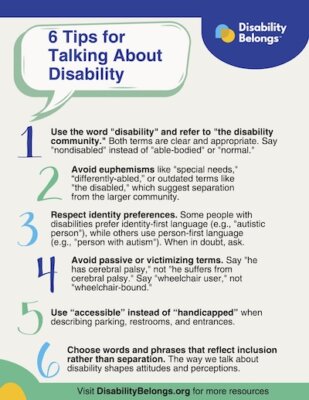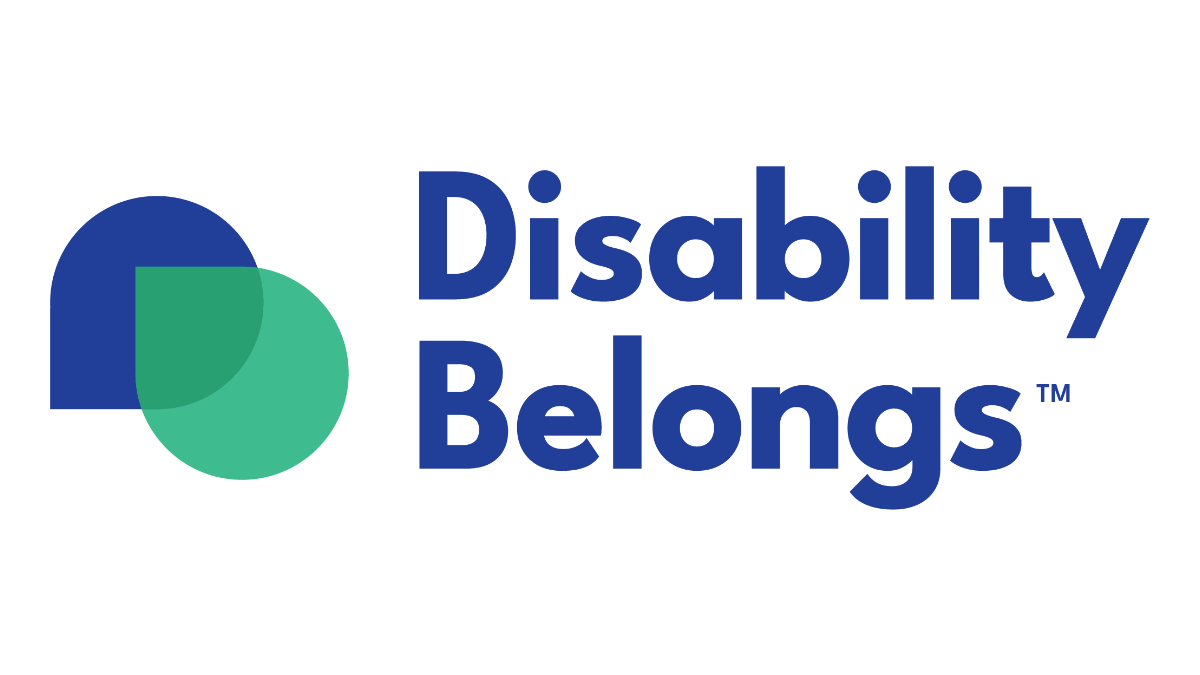1) Use the word “disability” and refer to “the disability community.” Both terms are clear and appropriate. Say “nondisabled” instead of “able-bodied” or “normal.”
2) Avoid euphemisms like “special needs,” “differently abled,” or outdated terms like “the disabled,” which suggest separation from the larger community.
3) Respect identity preferences. Some people with disabilities prefer identity-first language (e.g., “autistic person”), while others use person-first language (e.g., “person with autism”). When in doubt, ask.
4) Avoid passive or victimizing terms. Say “he has cerebral palsy,” not “he suffers from cerebral palsy.” Say “wheelchair user,” not “wheelchair-bound.”
5) Use “accessible” instead of “handicapped” when describing parking, restrooms, and entrances.
6) Choose words and phrases that reflect inclusion rather than separation. The way we talk about disability shapes attitudes and perceptions.





